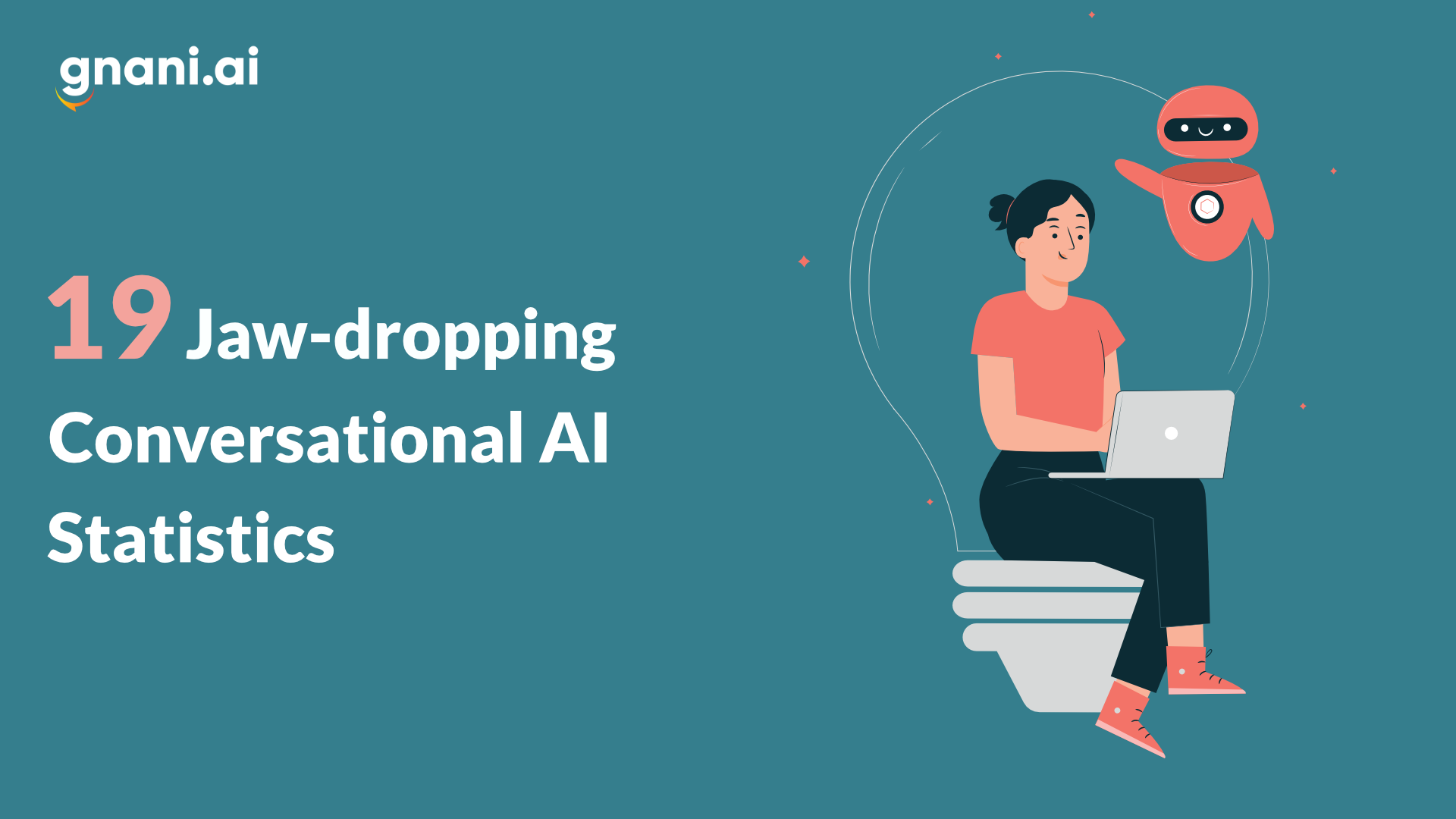Customers want nothing less than a 5-star experience these days, that too every time they interact with any brand. A focused customer-first business will try to incorporate the latest technologies to keep itself afloat. More than 95% of customer interactions will be taken over by AI by 2025. That’s the kind of impact that AI and its related technologies have had on businesses around the world.
In this article, we will look at some of the latest conversational AI statistics that will make you sit up and take notice of this technology.
Conversational AI uses state-of-the-art speech recognition and cognitive response system to offer natural conversations between humans and computer systems. It can be integrated into IVR, voice-led communication channels, messaging platforms, mobile apps, and a number of other channels.
Interesting Conversational AI Statistics In 2022
1. According to The State of Service Research report prepared by Salesforce, 77% of agents believe that automation tools will help them complete more complex tasks. Since most employees are working in different time zones, all their issues cannot be handled on time. It is impossible to have agents address IT help desk issues 24*7. This is where conversational AI chatbots can make all the difference.
2. Did you know that employees spend 16% of their time in internal communication and collaboration while more than 19% spend it on researching and gathering information?
3. Bloomfire says that using conversational AI can reduce the time spent on these activities; instead, they will be empowered to provide immediate redressals to issues.
4. According to SDI, every IT help desk agent you onboard requires 10 to 80 hours of training each year. On the other hand, a conversational AI chatbot doesn’t require an onboarding process. The bot can be up and running within seconds.
Agent & Ticket Solving
5. The ratio of tickets to agents is 120:1, according to Freshservice’s State of the Service Desk Report. This isn’t the case with conversational AI bots, as they can handle hundreds of queries simultaneously.
6. Because of the skewed ratio of agents and open tickets, the average time to resolve a ticket is about 10 hours, based on the same Freshservice’s State of the Service Desk report.
7. Business Standard says that your employees spend more than 3 hours a day on activities that are easily automatable.
8. Employees spend 8 hours a week making futile attempts to find solutions, according to a study by Workplace Knowledge and Productivity.
Conversational AI For Better Employee Productivity
9. When an employee is trying to find solutions for customers, more than 50% of them complain that they are unable to find the information they need, according to a BusinessWire report. Conversational AI chatbot makes it simple to find solutions.
10. Let’s say your company has 1,000 employees, and your onboarding inefficiencies will cost you $253,000. If you have 100,000 employees, you stand to lose $25 million, says a Panopto report. Conversational AI chatbots make onboarding a breeze.
11. 81% of employees are frustrated when they cannot access the information they need to do their jobs. Chatbots can collect data from multiple sources within seconds.
Conversational AI Market
12. The conversational AI market is expected to be worth $18.4 billion by 2026.
13. According to Venture Beat, Conversational AI bots and NLP can help businesses save up to $1million annually in customer service costs.
14. Millennials prefer interacting with chatbots over a customer support executive, says a MobileMarketer survey. Why? Because its responses are precise and don’t take much time. Customers are also of the opinion that they can ask any question to chatbots without fear of judgment.
15. The banking, retail, and healthcare industries stand to save more than $11 billion a year if they employ chatbots in customer service.
16. Five billion hours are expected to be saved by using chatbots by 2023.
17. According to an MIT Technology Review report, more than 90% of businesses reported that they had seen significant improvements in complaint resolution, call processing, customer and employee satisfaction with conversational AI chatbots.
18. Over 70% of chatbot conversations are expected to be with retail conversational AI systems by 2023.
19. 68% of customers believe that conversational AI bots provide quick solutions.
Conversational AI & Brands
Since brands and customers build a strong relationship and trust with each other using this technology, the future of conversational AI looks promising. Conversational AI has made great strides in its underlying technologies and use cases. It has moved past just answering FAQ queries. They have sophisticated natural language understanding (NLU) that understands the user’s intent and responds in a manner that will satisfy the user. If you haven’t adopted a conversational AI chatbot for your business yet, you stand to lose a lot.
Frequently Asked Questions
How big is the conversational AI market?
A recent study conducted by the strategic consulting and market research firm, BlueWeave Consulting, revealed that the conversational AI market was worth USD 6.9 billion in the year 2021. It is estimated to grow at a CAGR of 23.4%, earning revenue of around USD 29.9 billion by the end of 2028.
What is a conversational AI platform?
Conversational artificial intelligence (AI) is a group of technologies that connect humans and computer platforms using natural language processing and machine learning.
Where is conversational AI used?
Conversational AI refers to technologies that aim to provide users with an experience as similar to human interaction as possible. It’s widely used in customer service settings, among other areas, and there’s a huge potential for its use by companies and businesses.


